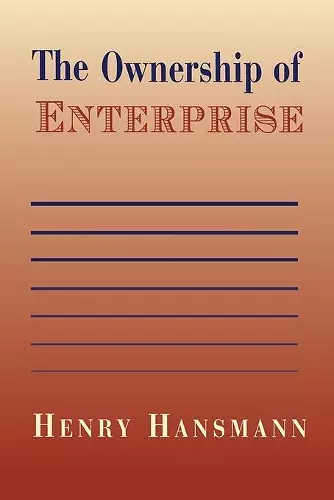The Ownership of Enterprise
Format:Paperback
Publisher:Harvard University Press
Currently unavailable, our supplier has not provided us a restock date

The investor-owned corporation is the conventional form for structuring large-scale enterprise in market economies. But it is not the only one. Even in the United States, noncapitalist firms play a vital role in many sectors. Employee-owned firms have long been prominent in the service professions--law, accounting, investment banking, medicine--and are becoming increasingly important in other industries. The buyout of United Airlines by its employees is the most conspicuous recent instance. Farmer-owned produce cooperatives dominate the market for most basic agricultural commodities. Consumer-owned utilities provide electricity to one out of eight households. Key firms such as MasterCard, Associated Press, and Ace Hardware are service and supply cooperatives owned by local businesses. Occupant-owned condominiums and cooperatives are rapidly displacing investor-owned rental housing. Mutual companies owned by their policyholders sell half of all life insurance and one-quarter of all property and liability insurance. And nonprofit firms, which have no owners at all, account for 90 percent of all nongovernmental schools and colleges, two-thirds of all hospitals, half of all day-care centers, and one-quarter of all nursing homes.
Henry Hansmann explores the reasons for this diverse pattern of ownership. He explains why different industries and different national economies exhibit different distributions of ownership forms. The key to the success of a particular form, he shows, depends on the balance between the costs of contracting in the market and the costs of ownership. And he examines how this balance is affected by history and by the legal and regulatory framework within which firms are organized.
With noncapitalist firms now playing an expanding role in the former socialist countries of Eastern Europe and Asia as well as in the developed market economies of the West, The Ownership of Enterprise will be an important book for business people, policymakers, and scholars.
In this book Hansmann considers a wide range of different kinds of organizations that are "owned" in different ways...This is a book that both economists, and scholars of organizations more broadly, should find interesting, informative, and provocative. I found it first-rate. -- R. R. Nelson * Journal of Economics *
[A] fascinating study [which] offer[s] useful insights into why organisations adopt different ownership and control structures...Three broad categories of firms are analysed- producer-owned, customer-owned and non-profit and mutual firms. A series of historical case studies of the development of different industries in which these ownership structures are common, including those of banking and insurance, are then presented. -- Ruben Lee * London Financial News *
In this remarkable book, Henry Hansmann asks why investor ownership is the dominant but by no means universal form of ownership. His answers provide a masterly demonstration of comparative organizational analysis...A brief review cannot do full justice to the richness, power, and range of Hansmann's analysis. Scattered throughout are little gems of insight, such as his explanations for why there is not cooperative ownership of utilities in urban areas as there is in many rural areas...for why country clubs are member-owned rather than investor-owned...and for why charities and listener-supported public radio stations are run on a non-profit basis...[This book] is a substantial contribution to organizational sociology. -- William Finlay * Contemporary Sociology *
ISBN: 9780674001718
Dimensions: unknown
Weight: 526g
384 pages